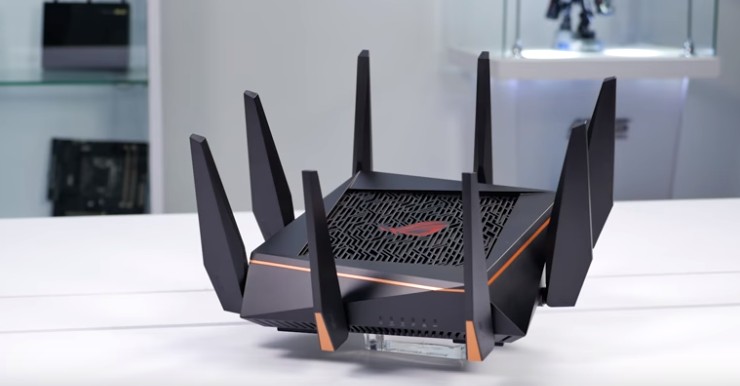How we test Wi-Fi routers
Everything that goes into testing Wi-Fi routers

Whether it's for the best Wi-Fi routers, the best Wi-Fi 6 routers, the best mesh Wi-Fi systems, the best Wi-Fi extenders, best gaming routers, or the best powerline extenders, it's important to know how well they're perform in your home.
At Tom’s Guide, we evaluate routers using a combination of quantitative testing and experience-based qualitative measures. In addition to a critical evaluation of the setup process, we look at the router’s range of features, the quality of its interface and how well it might fit into the home.
How we test Wi-Fi routers: Benchmark tests
In the quantitative portion, we use Keysight's xChariot network performance software to measure the router’s overall throughput by simulating 10 data-hungry users. When we test traditional routers, we set it up in a corner of a 3,500-square-foot home, place the Samsung Galaxy Book Pro endpoint laptop at 15-, 50-, 75- and 90-foot intervals and take throughput readings with IxChariot. Then, we set up the system in an adjacent room that is 25 feet away to check on the router’s ability to penetrate a wall followed by running the tests in a room directly above the router’s position to examine its ability to send a signal through a ceiling and floor.
For mesh products, we start with the six traditional router data points using the host router and no satellites connected and add a couple mesh tasks. In the first, we set up a satellite in a room above the router and measure throughput at a point 40-feet down a hallway. If the mesh kit included two satellites, we set up a second node a floor below the router and place the receiving system 40 feet away to measure its throughput.
With everything set up, we measure the router’s range by walking away from the router carrying the receiving system, looking for where the system loses contact with the router. To measure the router’s effectiveness at filling the entire house with data, we walk throughout the house with a connected system looking for dead zones where the system disconnects.
How we test Wi-Fi routers: Real-world tests
Next, we put the router through several real-world trials, starting with the saturation test. Here, we connect four separate systems that are streaming video, audio and moving data onto and off a networked drive. We monitor the audio and video for signs of interruptions and problems.
During the test, we use a Fluke 62 Mini IR Thermometer to find the router’s hot spot and a P3 P4460 Kill A Watt EZ Electricity Usage Monitor to measure its power consumption. Since routers run 24/7, we multiply that figure by 8,760 (the number of hours in a year) to get the router’s watt-hour consumption rating and divide by 1,000 to get the energy use in kilowatt-hours. We multiply the result by $0.14 (the current national average price of electricity for a kilowatt-hour) to get an estimate of the device’s annual power cost.
Get instant access to breaking news, the hottest reviews, great deals and helpful tips.
To make sure it’s reliable, we keep each router operating without interruption for about two weeks, using it every day for everything from email and online file access to gaming and some actual work. When done, we box it up and start on something new.
How we assign ratings to Wi-Fi routers
A router's final rating is a determination of a number of factors. First, we look at how well it performed on the benchmark and real-world tests relative to its peers; the better its throughput, the higher our esteem.
However, raw throughput is just one part of the equation. We also look at the ease with which we could set up the router and the software and app that comes with the router. How intuitive is it to use? If it's a gaming router, does it have settings you can configure to enhance your gameplay? Some other routers will also come with antivirus protection, while others will have parental controls. Aside from looking at their utility, we also look to see if these offerings are unique to a particular company.
Finally, we take the price of the router into consideration, to determine how much of a value it offers over comparable models. Because prices fluctuate, we base our comparison off the price of the router when we first review it. However, because prices do come down, a model that we might consider to be expensive when it's first released may become a better deal as time goes on.
All routers are given a rating on a scale of 1 to 5, with 5 being the highest. For a more detailed description of what our ratings mean, please refer to our general How We Test page.
 Club Benefits
Club Benefits





